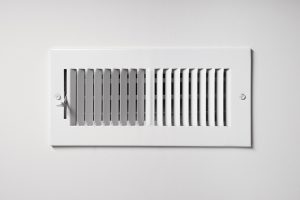
Proper ventilation is essential for having the best indoor air quality for a home. People tend to believe that air pollution is a problem that only exists outside—but this couldn’t be farther from the truth. Numerous airborne contaminants come from inside a house: cooking and cleaning products, cosmetics, pressed wood, paint and varnish, hobby tools, vehicles in an attached garage, and more. The best way to clean out a concentration of chemicals, smoke, volatile organic compounds (VOCs), and plain ol’ dust is to open up the house to circulate a fresh breeze.
We can already anticipate your objection: “How can I do that during times when it’s extremely hot or cold outside?” This is the number one problem. Maintaining energy efficiency in a home requires a sealed home. This is why so many houses today are built tightly with heavy insulation. And its also why so many contaminants get trapped indoors.
Here’s One Solution: The Heat Recovery Ventilator (HRV)
The heat recovery ventilator is a device a professional can install into your current HVAC system. What it does is ventilate your house with fresh air, but pre-heating or pre-cooling the air as it comes in. It doesn’t have to use up much additional energy to do this job—it’s not like you’re adding on a second heater or air conditioner. The HRV instead recovers the energy already used to heat the air in the home or remove the heat from the air in the home (i.e. cool the air) and then applies it to the incoming fresh air.
Let’s imagine a hot day—and those days are coming up—to show how this works.
It’s 85°F outside, and inside you’ve run the AC to cool it down to around 72°F. The HRV pulls in the fresh 85°F air through an outside vent. From indoor vents, it draws in a current of the cooled 72°F air that’s also stale and filled with pollutants. The two currents pass through the HRV. They don’t come into contact, but a heat exchanger allows for heat to flow from one to the other. The fresh 85°F air loses heat to the stale 72°F air, cooling down. The stale air is exhausted outside, and the fresh air that’s now closer to the indoor temperature you want for the house is brought inside.
And in the winter, the process is the same, only flipped: warm indoor air heats the cold outdoor air.
Fresher Air, Energy Saved
An HRV can save 70–80% of the heat energy that would otherwise be lost to open windows and doors. You can heat and cool your house without worrying about the fresh air spoiling the climate you want.
You’ll need professionals to install an HRV. We’re a local, family-owned HVAC company with a well-trained staff, and we offer many great solutions for comfort and indoor air quality in Courtenay, BC. If you’re looking for better ventilation in your house, call us and we’ll be glad to help you find answers.
Temprite Climate Solutions can help you understand your home’s comfort problems. For a job done right, call Temprite!
